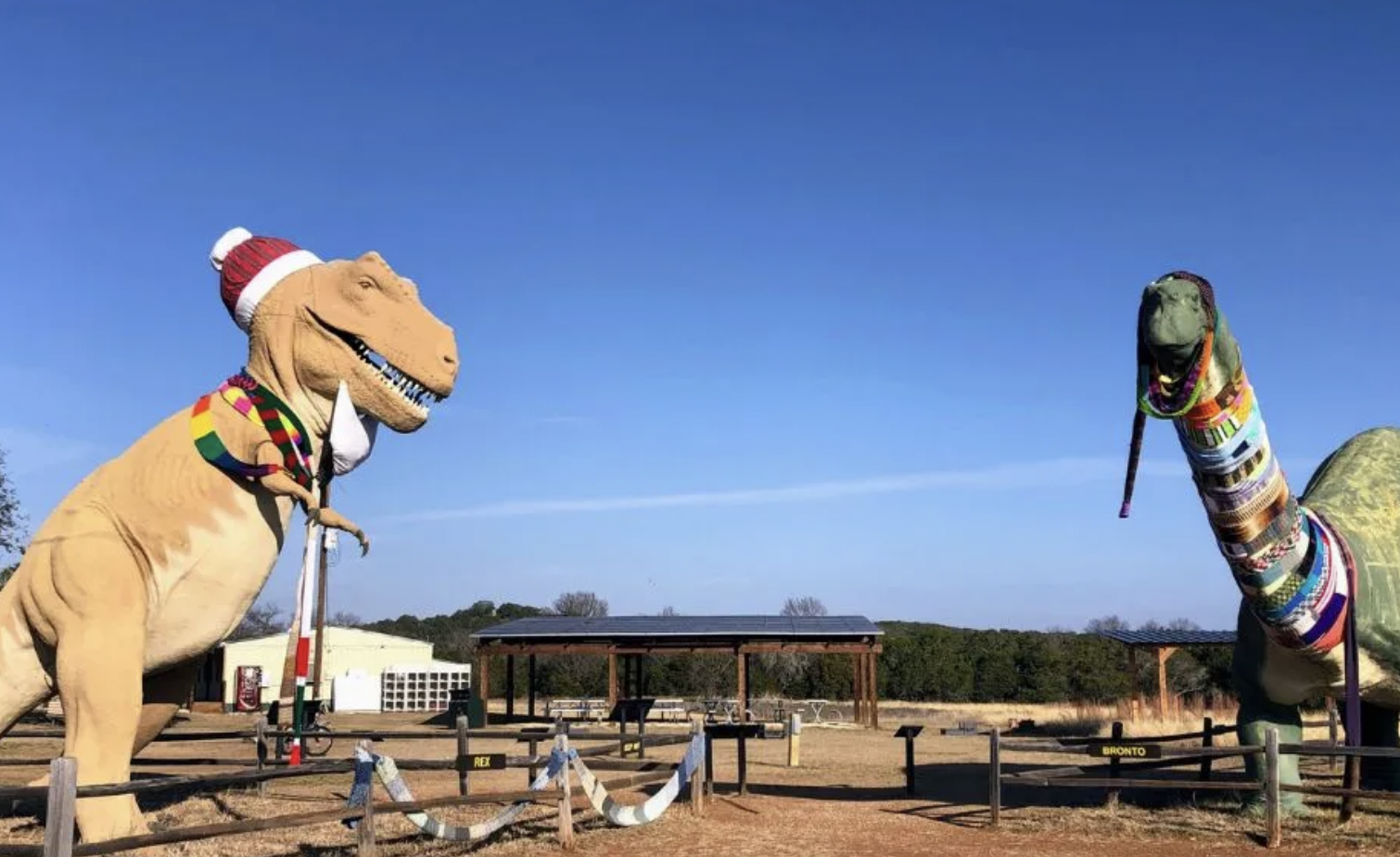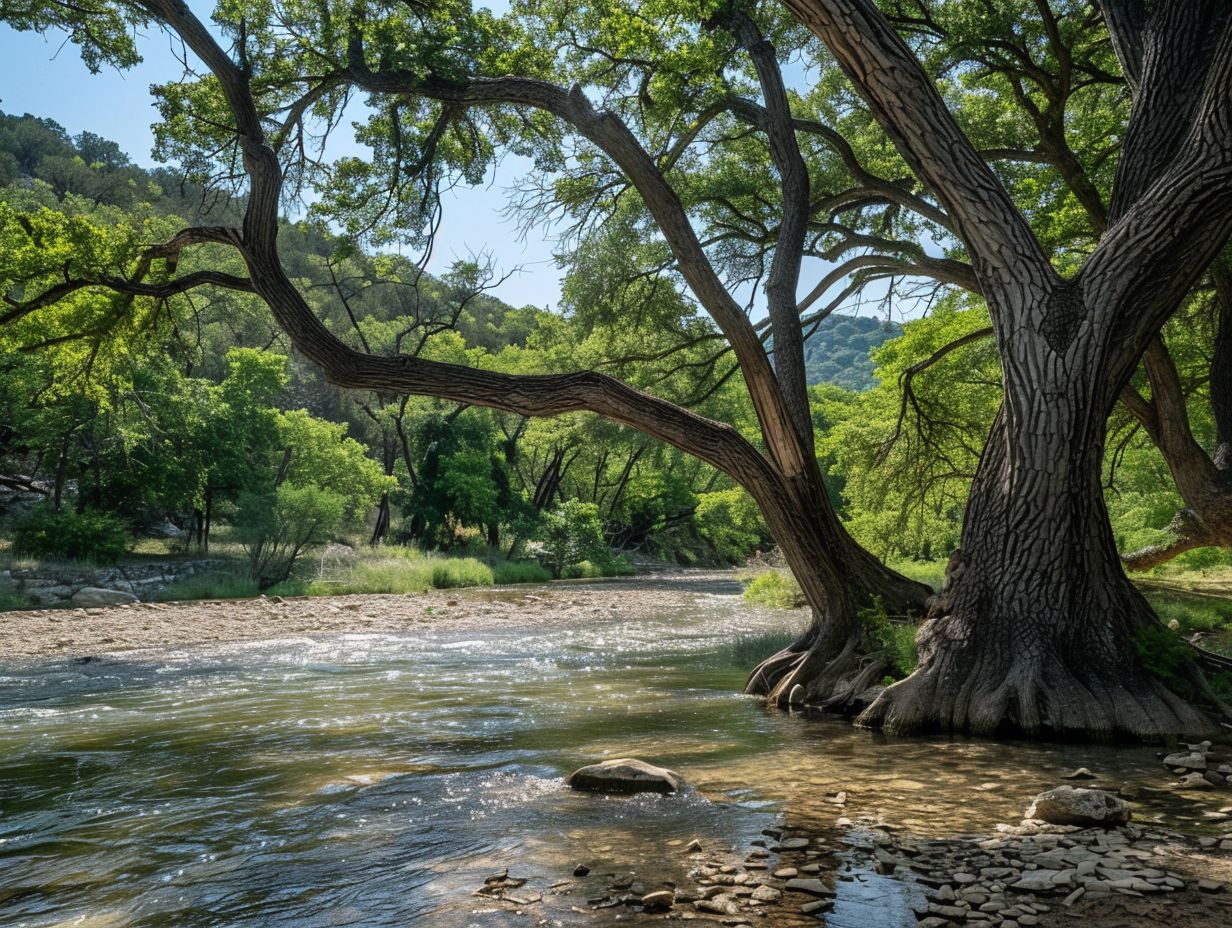Dinosaur Valley State Park is a captivating destination in Texas that offers a unique glimpse into the ancient past. Established in 1972, this 1,524.72-acre (617 ha) National Natural Landmark is renowned for its well-preserved dinosaur tracks, which have been attracting visitors and researchers for over a century.
The Discovery of Dinosaur Tracks
The history of Dinosaur Valley State Park can be traced back to 1908 when a devastating flood along the Paluxy River revealed large, three-toed tracks, known as theropod tracks. These tracks were the first indication that the area was once home to a diverse array of prehistoric creatures.
In 1938, a fossil collector named R.T. Bird, working for the American Museum of Natural History, made an even more remarkable discovery. He found what appeared to be sauropod tracks, providing the first evidence that these massive, long-necked dinosaurs had once roamed the region.
Establishing the State Park

The significance of these discoveries was not lost on the local community, and in 1972, the state of Texas established Dinosaur Valley State Park to preserve the valuable dinosaur track sites and allow visitors to learn from and enjoy them.
The park features impressive models of an Apatosaurus and a Tyrannosaurus rex, which were originally displayed at the 1964-65 New York World’s Fair before being donated to the park in 1970.
Ongoing Preservation and Exploration
The park’s two main track sites, the “Main Track Site” and “The Ballroom,” showcase examples of the two types of dinosaurs that left their marks in the limestone deposits along the Paluxy River. Park staff and volunteers work tirelessly to keep these tracks cleaned out and maintained, as they are constantly under threat from erosion and natural processes.
Controversies and Debates
Dinosaur Valley State Park has also been the center of controversy regarding the discovery of “twin sets” of tracks in the limestone deposits. These tracks were once thought to be evidence that humans and non-avian dinosaurs lived at the same time, a notion that is contrary to the standard view of the geological time scale.
While this interpretation has been debunked, and the tracks are now identified as having been created by dinosaurs, the debate continues among some young-Earth creationists who believe that humans and non-avian dinosaurs coexisted.
Exploring the Park
In addition to the captivating dinosaur tracks, Dinosaur Valley State Park offers a range of outdoor activities for visitors to enjoy, including hiking, boating, and mountain biking. The park’s diverse landscape and rich natural history make it a must-visit destination for anyone interested in paleontology, geology, and the wonders of the natural world.
Conclusion
Dinosaur Valley State Park is a true gem of Texas, offering a unique and fascinating glimpse into the prehistoric past. From the discovery of the first dinosaur tracks to the ongoing efforts to preserve and study these remarkable fossils, the park’s history is a testament to the enduring fascination with these ancient creatures and the insights they provide into the evolution of life on our planet.
References:
– Dinosaur Valley State Park – Texas Parks & Wildlife Department
– The History of the Dinosaurs of Glen Rose
– Dinosaur Valley State Park – Wikipedia
– Dinosaur Valley State Park – Select Registry

